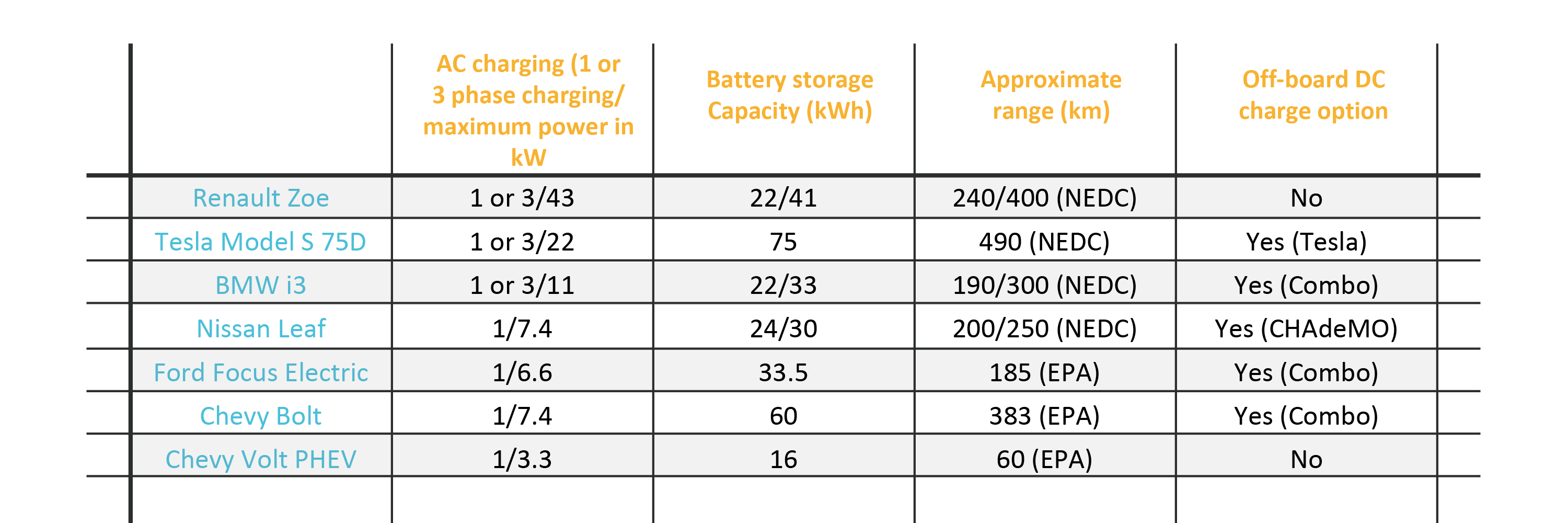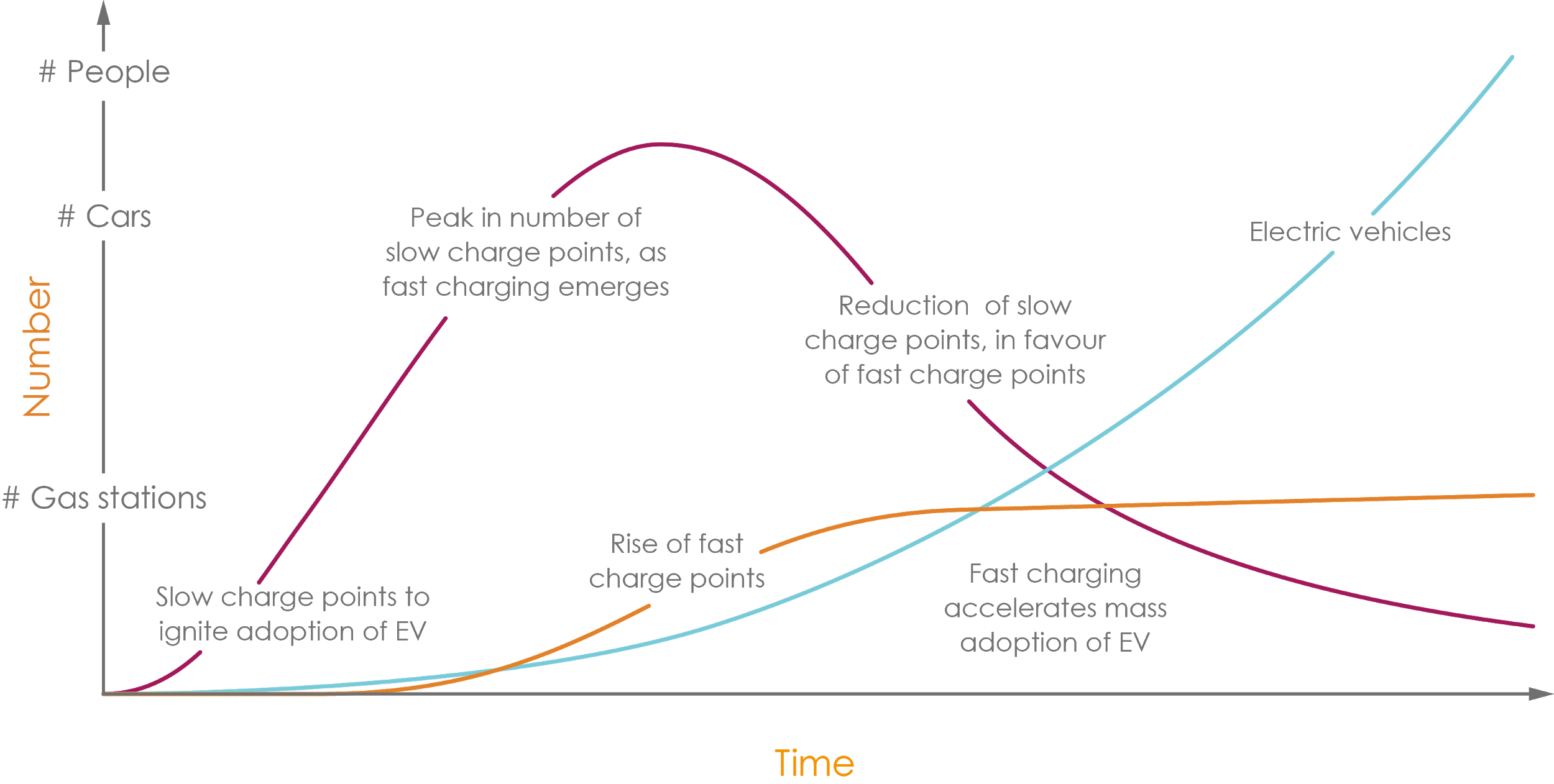2.3.4 Lecture Notes: EV Charging Process and Smart Charging
Course subject(s)
Module 2. Introduction to Technology of EVs
Recap: EV Charging estimation
A short charging time is very important for the electric car industry, as the users of ICE cars are used to refuel their car in minutes. To provide insights into the most important factors that influence the charging time, a basic understanding of the underlying equations is needed.
- Charge/Discharge rate (C-rate):
This parameter describes the magnitude of current drawn from or input into the battery, in terms of the nominal ampere-hour of the battery. A battery cell discharging at a rate of 1C will deliver its nominal ampere-hour for 1hr whilst a cell discharging at 2C will deliver its nominal capacity in 0.5hr. Maximum charge rates for currently available Li-ion cells are usually between 3C and 6C, even though there are some high power Li-ion cells that are optimized for 2C to 25C continuous discharge. This equation can be used to calculate the C-rate.
C-rate=(Ibatt/Qnom)
- Charging power and current:
A general equation for estimating the charging power is as follows:Pch= VbattIch
Where Pch is the charging power in W, Vbatt is the voltage of the EV battery in Volts and Ich is the current at which the battery is charged in Amperes. High currents will thus lead to faster charging, but can also cause the battery and the charger to overheat or to degrade faster, causing a shorter life-span. The maximum charging power is dependent on the maximum voltage and current that the battery can handle and the charger can provide. Charging a mobile phone happens with a current in the order of 1-4 Ampere, while fast charging an EV is done with a current in the order of hundreds Ampere.
- Charging power and energy delivered:
The energy that is put into the battery is the charging power integrated over time, which, assuming zero losses, is defined as:Ech= ∫ Pch dt
In this equation Ech is the energy that is put into the battery in kWh. If Pch is the average charging power in kW, over the timespan tch in hours.
Ech=Pch tch
- C-rate:
C-rate is the ratio of the charging power to the nominal energy capacity of the battery. As the charging current increases, so does the C-rateC-rate= Pch/Enom
where Pch is the charging power, in kW and Enom is the nominal energy capacity of the battery, in kWh.
Note on units for power and energy
It is common that people confuse power and energy. So it is important that we understand it right. Energy is the time integral of power. Or simply put, energy is the product of power and time, when power is a constant.
Energy = Power x Time
The units of energy are joules, watt-hour or kilowatt-hour. While the units of power are watts, horsepower or kilowatts. Simple conversions can be made:
1 kilowatt (kW) = 1000 watts (W)
1 horsepower = 745.7 watts
1 watt-hour (Wh) = 3600 joules (J)
1 kilowatt-hour (kWh) = 1000 watt-hours
Typical examples of EV and charging capabilities
In the table below, you can find a list of various EVs, their maximum charging power in kW, possibility for single or three-phase charging, battery capacity in kWh, range in km and option for off-board charging. Not all cars can do three-phase charging. This is important to keep in mind while building charging infrastructure. The list is not comprehensive but gives a general overview.

Curious about other cars? Then use this tool made by EVbox and this tool by NewMotion to enter the car model. Further, the EPA and NEDC car ranges of different cars can be seen at https://pushevs.com/electric-car-range-efficiency-epa/ and https://pushevs.com/2017/05/23/electric-car-range-efficiency-table-nedc/.
The tools together show the electric range, battery capacity, connector type, single or three-phase charging possibilities, charging power, charging times and plug location. Play around!
Word of caution: We have noticed that the values on the above website are not always updated and could be incorrect at times. Further, the specifications of the car change with every model year as well. So please always check the brochure and/or with the car manufacturer before making any decisions. The aim of this exercise to play with these websites is to help you to get familiar with different cars and their technical parameters.
Number of EVs and charging infrastructure
As can be seen in the figure below, an EV charging infrastructure roll-out begins with slow charging infrastructure in several locations. At some point in time the first fast-charging stations are added to the charging infrastructure and the number of slow charging points peaks. When there is a reliable network of fast and slow charging infrastructure, the large-scale EV roll-out can start.

Figure: The relationship between the number of EVs and the charging infrastructure during the roll-out process.
Want to learn more?
A detailed analysis of EV charging and EV batteries from a technology perspective is covered in the follow up course, Electric cars: Technology and from a business perspective in the follow up course, Electric cars: Business. You can sign up now @ www.tiny.cc/ecarsx

Electric Cars: Introduction by TU Delft OpenCourseWare is licensed under a Creative Commons Attribution-NonCommercial-ShareAlike 4.0 International License.
Based on a work at https://online-learning.tudelft.nl/courses/electric-cars-introduction/.



